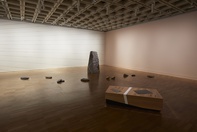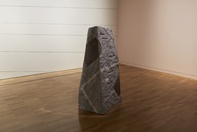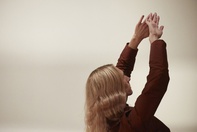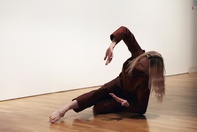Fayen d’Evie
Muckleford, Victoria
2019
Displayed 2019 at Art Gallery of New South Wales
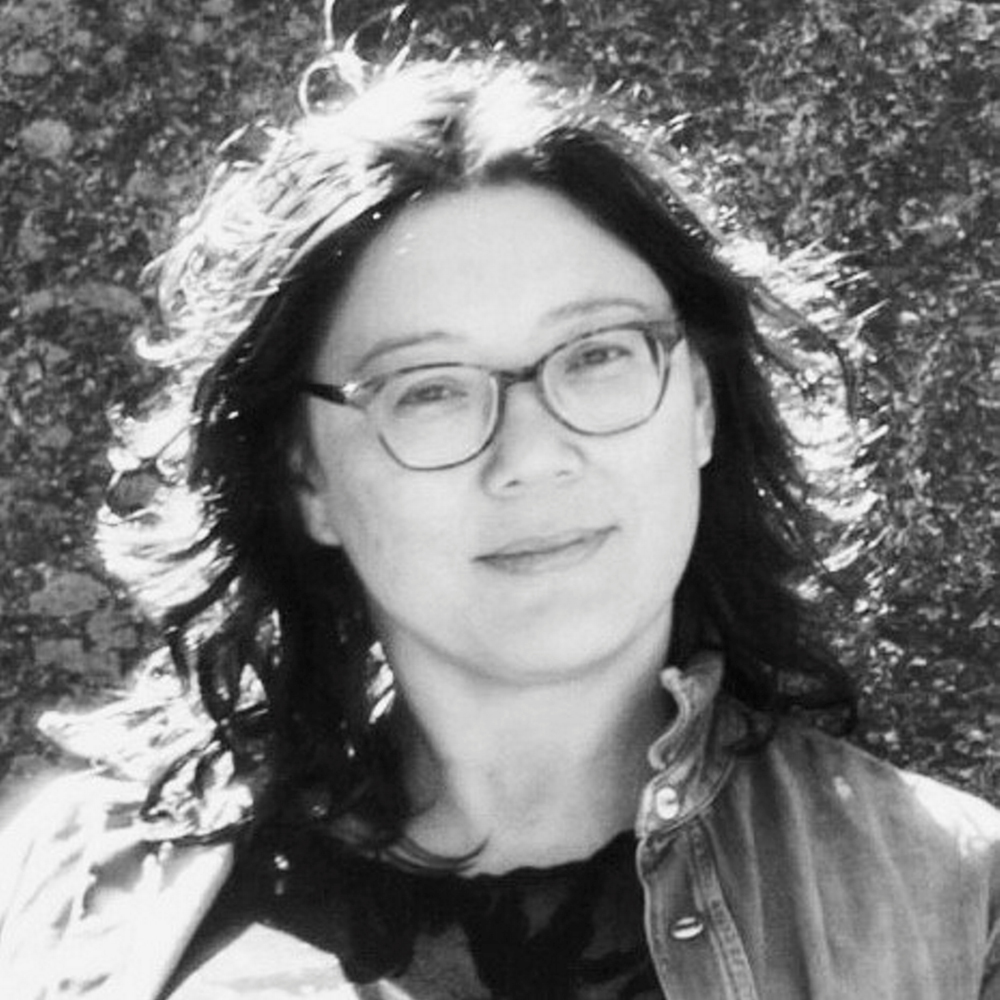
Fayen d’Evie
Born 1974, Petaling Jaya, Malaysia. Lives and works Muckleford, Victoria
Fayen d’Evie’s projects are often conversational and collaborative, and resist spectatorship by activating diverse audiences in embodied readings of artworks. D’Evie advocates for the radical potential for blindness, arguing that blindness agitates ocularcentric norms, and offers critical positions and methods attuned to sensory translations, ephemerality, the tangible and intangible, hallucination, uncertainty, concealment, and the invisible. D’Evie is the founder of 3-ply, which investigates artist-led publishing as an experimental site for the creation and dispersal of texts. With artist Katie West, d’Evie co-founded the Museum Incognita, which revisits neglected, concealed or obscured histories through embodied encounters.
Photograph: Pippa Samaya
Artist text
by Margaret Woodward
In Essays in Vibrational Poetics (2019) Fayen d’Evie questions how to ‘publish’ fragments of messages for future audiences to detect, recognising that in the event of the collapse of civilisation and ecological calamity, these audiences might not be human. As her sense of sight continues to diminish, d’Evie turns to gestural, tactile and vibrational forms of communication.
Publishing is a visceral experience, involving the visual, tactile, aural and olfactory senses, hefted for centuries with the geologic weight of metal and wood. While technology has removed much of the physicality of printing, the language of publishing still carries the traces of this bodily connection. The anatomy of type is described using a human lexicon, with individual letterforms composed of ears, shoulders, arms, legs, feet and tails. The ‘body type’ of a published page is embraced by an armature of headers, footers and spines. Wood fibre is impregnated with carbon, punctuated by metal. D’Evie both expands and challenges traditional materials and modes of publishing. While her speculative posthuman typographies are strongly connected to the human origins of typography and printing, her work is also embedded with messages of another kind. In The National 2019 d’Evie publishes a set of experimental ‘essays’ as propositions for carrying story through stone, wherein messages may be carved, heard and felt as vibrations, or performed through gesture. Held within these lithic essays are fragments that assert the importance of women writers, publishers and painters, and of those whose experience of the world challenges dominant normative ideas of the sensing body.
In Essays in Vibrational Poetics four ‘publications’ in stone carry poetic fragments of messages left for future posthuman audiences. Each ‘essay’ can be understood as a means of testing out speculative forms of publishing and typography that go beyond the traditional thresholds of written language. D’Evie introduces the fleeting traces of dance, gesture, touch and vibration as ways of carrying these messages. In Essays in Vibrational Poetics. Acknowledging Margaret Woodward, Núria LÓpez, Mrs Eaves, and women who painted the caves in tactile poetics, d’Evie uses the experimental font Blind Words (2015) by Núria López, which combines Braille and Latin alphabets. In other essays, American Sign Language writing inspires gestural, poetic communications, while inscriptions in the font Mrs Eaves pay homage to women typographers. These experimental messages ‘published’ in stone offset the weightiness of geology with the transience of gesture. Mineral seams in rocks are reminiscent of the spines of books, or of dancers or the complex bodies of the more-than-human world.
In collaboration with dancer Benjamin Hancock and sound artist Bryan Phillips, d’Evie’s score is made public and type is again sensorily re-embodied through performances of vibrational poetics. Hancock ‘inhabits’ d’Evie’s speculative typographic forms, inflecting her messages with typo/choreographic gestures of ligatures and limbs. Phillips’ low frequency vibrational compositions are sensed via non-visible vocabularies, signals that may also be detected by non-human species of animals and plants. In Essays in Vibrational Poetics Fayen d’Evie inscribes a new embodied typography, where the latent gestural qualities of type are released via movement and dance. Through touch, listening, scoring, puncturing, engraving and movement, the body is reacquainted with the visceral origins of publishing. Here, a new form of languaging emerges, a kind of ‘glyphic choreography’, in which d’Evie’s publishing in stone activates other sensory readings, transcending the present. Fragments left for future sensing audiences to stumble upon.
